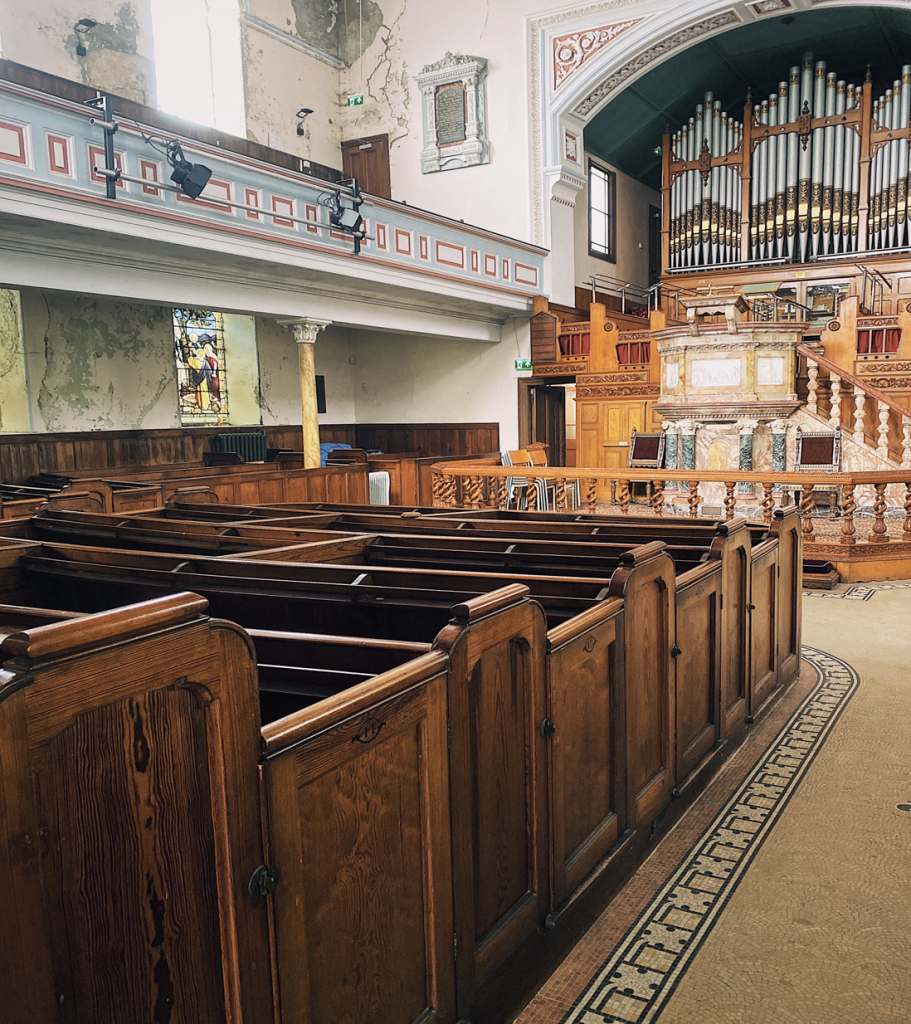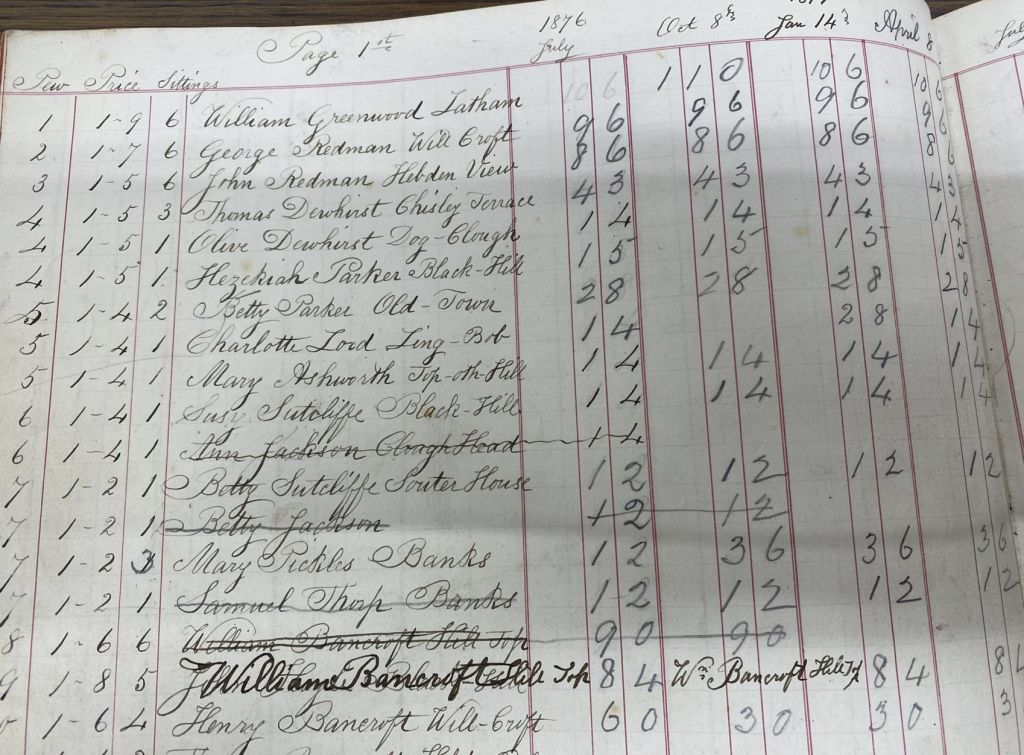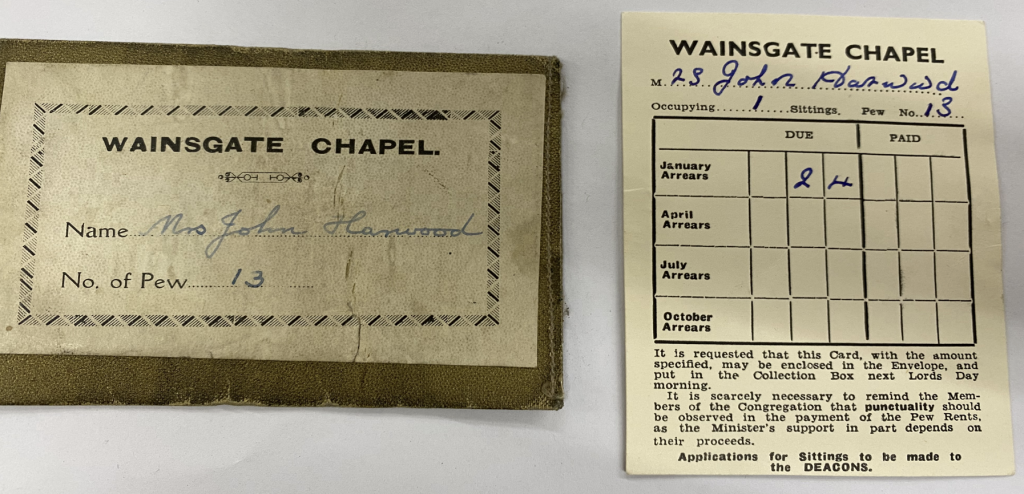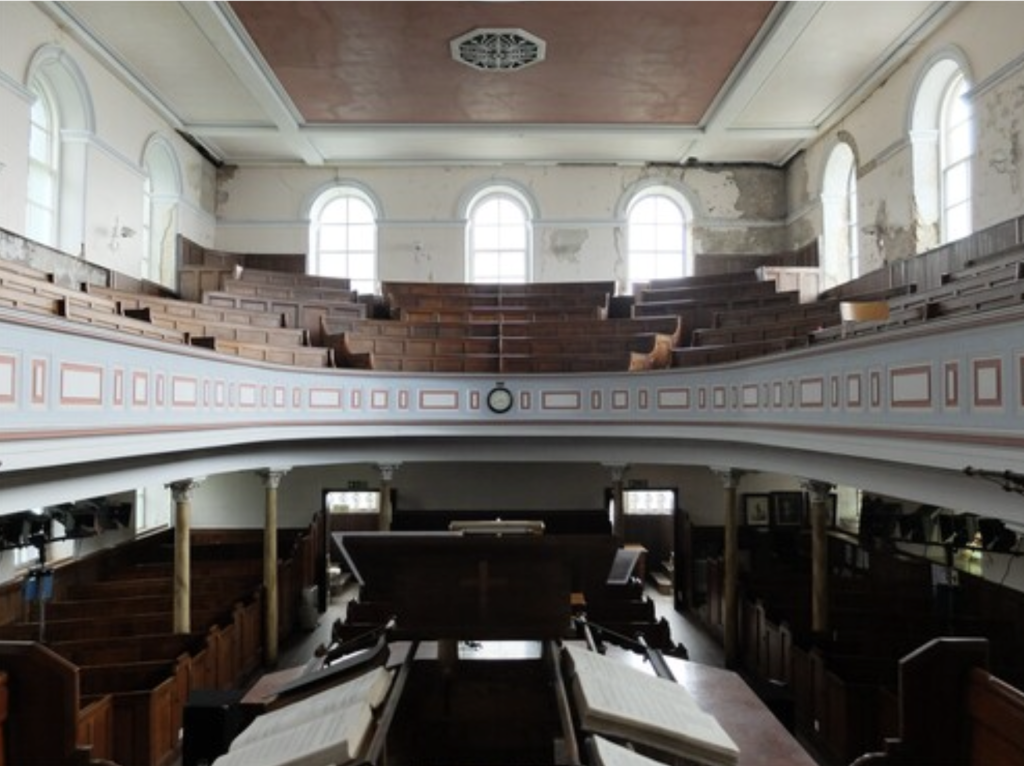PEW NUMBERS
People and Pews: Organisation and Administration

It is possible that the pews that we see today were added to the chapel construction sometime after the rebuild of the third chapel and perhaps during the ministry of George Wilkinson (1878-1894) when subscriptions and collections funded the cost of re-seating and enhancing the appearance of the chapel. It is possible, however, that the pews could have been added in the earlier part of the twentieth century when there were further investment in new facilities here at Wainsgate. There is an element of ‘fellowship’ to sharing a pew with other members of the congregation for worship. But was there also an element of societal and financial pressure inherently involved in the system of pew rents?
CLICK HERE for a lively take on the history of pews by Luke T Harrington.
The Pew system at Wainsgate
At Wainsgate, the pews are found on both of the two-tiers of the chapel providing seating for a congregation of 700.
Charles Thompson writes in Wainsgate Baptist Chapel, West Yorkshire: A History and Guide):
‘The upper tier has a curved gallery with steeply raked and fitted pine pewing, supported on pilasters with Corinthian capitals.’
‘The chapel as viewed from the organist/choirmaster’s podium: there is much music in the rhythm of a gallery’s pews.’
Picture and caption taken from: Baptists in Sacred Space? Worship, Buildings, and Belonging by Clyde Binfield (Baptist Quarterly, Volume 54, 2023) Click on the image above for the full article
Who sat where?
Families or individuals that were part of the congregation would pay for their pew and be allocated a pew number, such practise ensured a regular income stream for the chapel and ‘ensured the ministers support.’
There is evidence of a pew being ‘bought.’ Anne Appleyard of Lower White Lee who bought pew 33 which is in the northwest corner of the ground floor of the chapel. Such a sale would raise funds that would help pay for chapel expenses.

There is a metal plaque fixed on the wall above pew No.33, which is in the north west corner of the ground floor of the chapel, next to the entrance from the Sunday school lobby. The inscription reads:
‘This pew is the property of Ann Appleyard of White Lee, Mytholmroyd and her heirs for which she has paid to trustees the sum of £333. In memory of her relations who are buried in the adjoining graveyard – May 1900.”
Additional information on Anne Appleyard can be found on Chris Barnett’s Wainsgate Graveyard Project
Payment for Pews: Pew renting or Pew Letting

The above image shows a page from the pew payment record from Wainsgate in 1876 (from the Birchcliffe Archive). It appears that pew rents or lets were collected in October, January and July. We can also see that the record details the name, the price and the number of sittings alongside the pew number that each individual had been allocated.
The collecting of pew rents was an important administrative task whose responsibility was recorded in the minute book of the chapel and the records below.
John Harwood

The Pew payment card shown above (from the Birchcliffe Archive) is for Mr. John Harwood who would have sat in pew 13, occupying 1 seat within the pew.
Payment for pews at Wainsgate were recorded on cards and kept in a wallet with the owners name and pew number on the outside.
The card reads:
“It is requested that this card, with the amount specified, may be enclosed in the envelope, and put in the collection box next Lord’s Day morning.
It is scarcely necessary to remind the members of the congregation that punctuality should be observed in the payment of the pew rents as the minister’s support in part depends on their proceeds.
Applications for sittings to be made to the Deacon.”
A fairly stern message reminding each individual of their responsibilities.
John Harwood would have sat in the pew below.

The reason for pew rents being abolished here at Wainsgate are unclear as is the date at which this happened. Reasons for abolishing this system may have included factors such as diminishing profits and/or that the cost and trouble of administration may have become burdensome. There may also have been philosophical reasons for the practise to end.
CLICK HERE to find out more about the seating plan at Wainsgate
